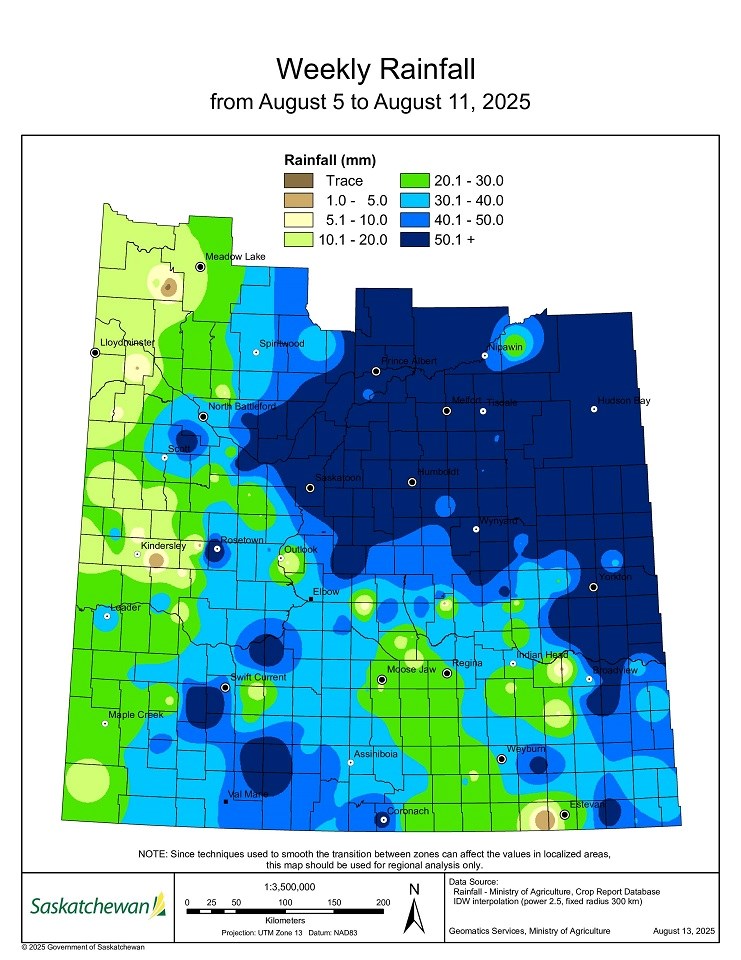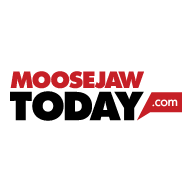There was more rain in the province this week compared to the previous week, according to the provincial crop report.
The latest rainfall map shows most areas got between 20 and over 50 millimetres of precipitation with a few small areas around the province getting 10 millimetres or less. The Beatty area in the northeast received the most with 105 millimetres (mm), followed by the Calder area with 103 mm and the Star City area with 102 mm. The Bruno, Prince Albert and Saskatoon areas all received 90 mm of rain or more.

Tyce Masich, a Crops Extension Specialist with the Ministry of Agriculture in Outlook, says the rain stopped harvest operations and desiccation operations.
While rain boosted topsoil moisture levels for crop land, hay land, and pasture land, as well as helping later-seeded crops, excessive moisture caused some crop damage though it was minor and not widespread. Damage due to grasshopper and bertha armyworm was also reported in pockets of the east-central, northeast, and northwest regions.
The report had cropland topsoil moisture rated at 11 per cent surplus, 75 per cent adequate, 11 per cent short and only three per cent very short. For hayland, topsoil moisture is eight per cent surplus, 68 per cent adequate, 16 per cent short and eight per cent very short. Pastures have topsoil moisture levels at six per cent surplus, 67 per cent adequate, 19 per cent short and eight per cent very short.
Harvest progress is at two per cent, behind the five and ten year averages but Masich says the moisture slowed things down for producers who were able to combine. So far, 16 per cent of winter wheat, 14 per cent of fall rye, three per cent of lentils and peas, two per cent of barley and one per cent of spring wheat and canola have been harvested.
Masich says no producers in the west-central and northern regions have started harvest and doesn't believe it will start in earnest for another week or two.
Most producers are either done or finishing their last haying and silaging efforts. The crop report states, "Provincially, dryland alfalfa yields are 1.10 tonnes per acre and greenfeed yields are 2.09 tonnes per acre. For irrigated hay crops, alfalfa yielded 1.95 tonnes per acre while greenfeed yielded 2.95 tonnes per acre. Silage yields for the province this year are estimated to be 5.25 tonnes per acre."
Harvest is a busy time in Saskatchewan, and everyone is reminded to prioritize safety this fall.




